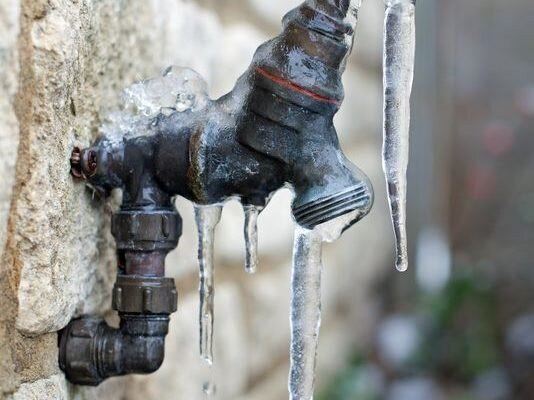Effective Methods to Guard Your Plumbing and Prevent Freezing in Frigid Weather
Effective Methods to Guard Your Plumbing and Prevent Freezing in Frigid Weather
Blog Article
What are your insights and beliefs on Winterizing Your Pipes?

All house owners that live in warm climates need to do their finest to winterize their pipes. Failing to do so can lead to catastrophe like frozen, cracked, or ruptured pipelines.
Try a Hair Dryer or Warm Weapon
When your pipelines are virtually freezing, your reliable hair dryer or warm weapon is a godsend. Bowling hot air straight right into them might help if the warm towels do not assist remove any type of working out ice in your pipes. Do not use other things that create straight fires like an impact torch. This can cause a bigger disaster that you can not manage. You may wind up damaging your pipes while trying to melt the ice. And also in the future, you might also end up burning your home. So be careful!
Open Up Closet Doors Hiding Plumbing
It would certainly be useful to open cabinet doors that are camouflaging your pipelines when it's cool outside. As an example, they could be somewhere in your kitchen area or washroom. This will enable the warm air from your heating system to flow there. Because of this, you stop these revealed pipes from freezing. Doing this little trick can maintain your pipelines warm and also limit the potentially harmful end results of freezing temperature levels.
Take Time to Wrap Exposed Piping
One great and also very easy hack to warm up icy pipes is to cover them with cozy towels. You can cover them initially with towels. After safeguarding them in position, you can put boiling water on the towels. Do it gradually to let the towels take in the liquid. You can additionally use pre-soaked towels in hot water, just don't forget to wear safety gloves to safeguard your hands from the warm.
Turn On the Faucets
When the temperature level decreases and it seems as if the frigid temperature level will last, it will assist to transform on your water both indoors and outdoors. This will certainly keep the water streaming via your plumbing systems. You'll end up wasting gallons of water this method.
When Pipes are Frozen, shut Off Water
Turn off the major water shutoff right away if you notice that your pipelines are completely frozen or nearly nearing that phase. You will normally locate this in your basement or utility room near the heating system or the front wall surface closest to the street. Turn it off as soon as possible to stop more damages.
With even more water, more ice will stack up, which will at some point lead to rupture pipelines. If you are not sure regarding the state of your pipelines this winter months, it is best to call an expert plumber for an assessment.
All property owners that live in pleasant environments have to do their finest to winterize their pipelines. Failing to do so can mean disaster like frozen, fractured, or burst pipelines. If the hot towels do not aid dislodge any settling ice in your pipelines, bowling hot air straight right into them may help. Turn off the main water shutoff quickly if you notice that your pipelines are entirely frozen or nearly nearing that phase. With even more water, more ice will pile up, which will at some point lead to burst pipes.
PREVENT YOUR PIPES FROM FREEZING THIS WINTER
A Leading Cause of Property Damage
When the weather is taking a deep nose dive into the cold dreary days, the risk of your pipes freezing and potentially bursting skyrockets. Unfortunately, during these cold dreary months, burst pipes are the most common denominator for property damage. The pipes that are most at the risk are those that are in areas where it is most cold in your home. For instance, pipes located in interior places such as basements, attics, and your garage. Unfortunately, that doesn’t mean that the pipes running through your cabinets or exterior walls can’t freeze. Good news, however, is that you can do things to help prevent pipes from freezing.
How to Prevent Pipes From Freezing
Once the temperature starts to drop during the winter, you should be taking the proper measures needed to ensure that your pipes stay warm and that there is circulation of water through them. Some steps that experts may recommend could go against your better judgement when it comes to saving water and heat. However, it would go without saying that when expenses are compared, damaged pipes could put a bigger dent in your wallet than a water bill.
What Can I Do?
Keep your garage door closed. This is very important, especially if you have water supply lines running through your garage. Open your kitchen and bathroom cabinets to allow warm air to circulate through them. Allow air circulation throughout your home. Keeping the interior doors open will once again allow the warm air to circulate inside your home. Ensure your thermostat is running the same temperature throughout the night and day. If you plan to be away from home during the cold months, set your temperature no lower than 55° F. This should provide enough heat to keep the pipes warm and prevent any remaining water inside the pipes from freezing. For more of a long-term solution, add insulation to attics, basement, and other crawl spaces around your home. By allowing your faucet to drip, it will alleviate pressure in the system. This is important because the pressure that is created between the blockage and the faucet can potentially cause the pipes to burst. Allowing the faucet to drip will prevent the pressure from building up, therefore keeping the pipes from bursting. Seal any cracks, openings, and crawl spaces around your home to prevent cold air from coming inside. This keeps your pipes-not to mention your home-warmer and less susceptible to issues caused by freezing temperatures. For the pipes in your home that are easily accessible, applying electrical tape to them might prevent them from freezing over. This is a quick fix, as you can apply the tape directly to the pipe. There are two options for heating tapes. One turns on and off by itself when it senses heat is needed. The other type of heating tape needs to be applied when heat is needed and removed when not necessary. If you have exposed pipes in your home, you can check this website to take a look at a few options that would be available at a shop near you.

Do you appreciate reading about Winterizing Your Pipes? Put feedback down below. We would be interested to hear your opinions about this write-up. Hoping that you visit us again soon. Sharing is caring. Helping people is fun. I am grateful for your time. Please pay a visit to our blog back soon.
Get A Quote Report this page